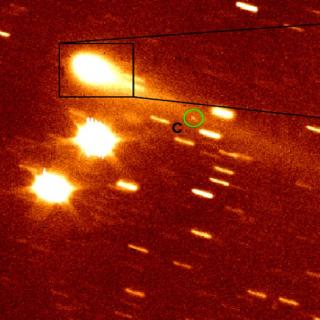Bibcode
Hargrove, Kelsey D.; Kelley, Michael S.; Campins, Humberto; Licandro, J.; Emery, Josh
Referencia bibliográfica
Icarus, Volume 221, Issue 1, p. 453-455.
Fecha de publicación:
9
2012
Revista
Número de citas
13
Número de citas referidas
12
Descripción
We find a clear diversity in the 3 μm and 10 μm features of three
Cybele asteroids: (107) Camilla, (121) Hermione, and (65) Cybele. (121)
Hermione exhibits a "check-like" 3 μm feature, which may be
attributed to OH-dominated minerals and (107) Camilla shows a rounded
"bowl" like feature closer to that of (65) Cybele, which may be
attributed to H2O-dominated minerals. The 10 μm features
of these three asteroids are also different from each other.
Proyectos relacionados

Pequeños Cuerpos del Sistema Solar
Este Proyecto estudia las propiedades físicas y composicionales de los llamados pequeños cuerpos del Sistema Solar, que incluyen asteroides, objetos helados y cometas. Entre los grupos de mayor interés destacan los objetos trans-neptunianos (TNOs), incluyendo los objetos más lejanos detectados hasta la fecha (Extreme-TNOs o ETNOs); los cometas, y
Julia de
León Cruz